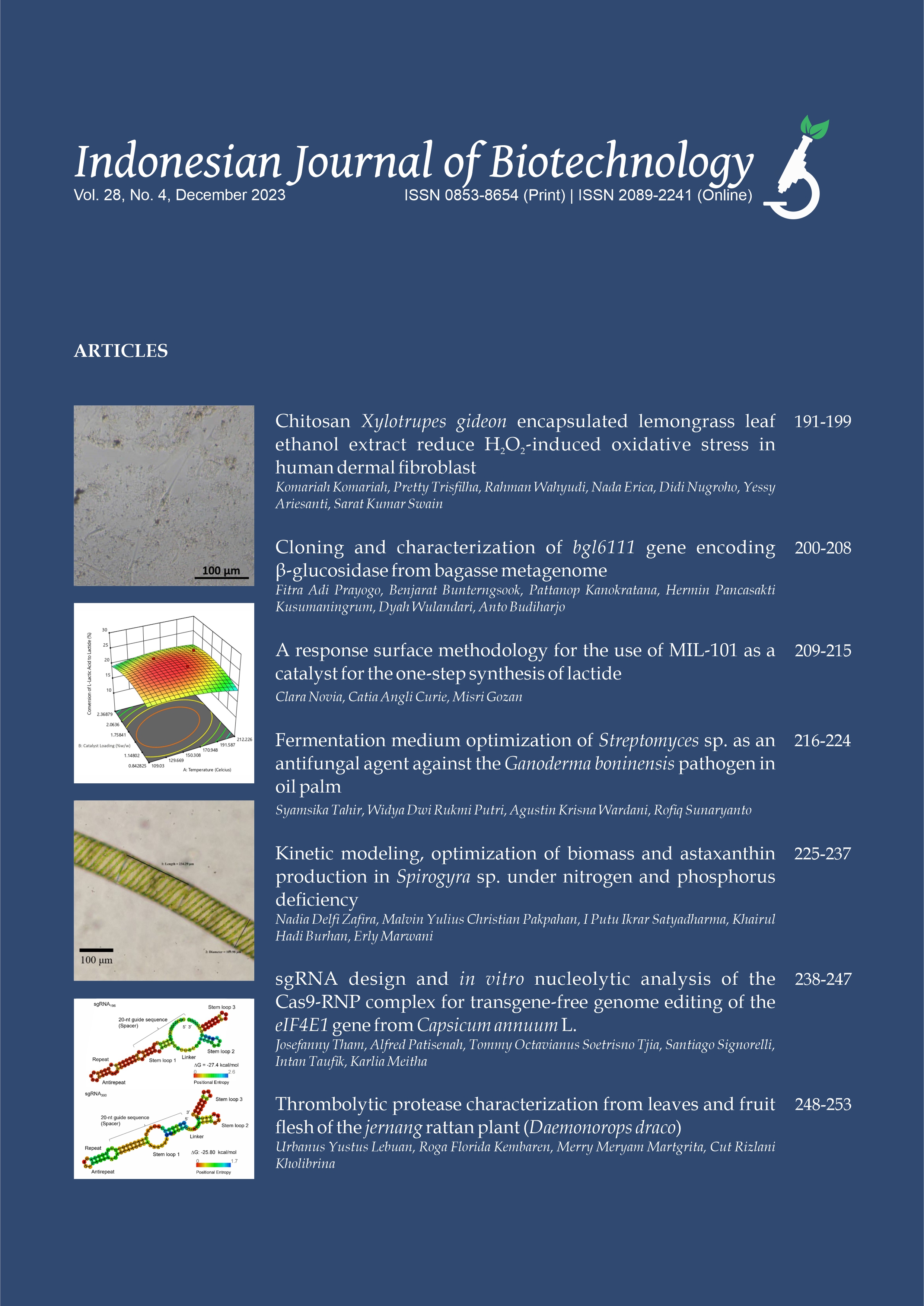Identification of Metabolic Intermediates in Microbial Degradation of Chrysene by Armillaria sp. F022
Tony Hadibarata(1*), Risky Ayu Kristanti(2)
(1)
(2)
(*) Corresponding Author
Abstract
To degrade chrysene, a polycyclic aromatic hydrocarbon (PAH), Armillaria sp. F022, a fungus collected from a soil, was used. Maximal degradation (77%) was obtained when Armillaria sp. F022 was incubated in cultures agitated at 120 rpm for 30 days, as compared to just 41% degradation in stationary culture. Furthermore, the degradation of chrysene was affected by the addition of surfactants. The mechanism of degradation was determined through identification of the intermediates. Several enzymes (manganese peroxidase, lignin peroxidase, laccase, 1,2-dioxygenase and 2,3-dioxygenase) produced by Armillaria sp. F022 were detected in the culture. The highest level of activity was shown by 1,2-dioxygenase after 20 days (143.6 U l-1). These
ligninolytic and dioxygenase enzymes played an important role in the oxidation of chrysene. Chrysene was indeed degraded by Armillaria sp. F022 through several intermediates, chrysenequinone, 2-((1E,3E)-4-carboxy-3-hydroxybuta-1,3-dien-1-yl)-1-naphthoic acid , 1-hydroxy-2-naphthoic acid, and gentisic acid.
Keywords : Biodegradation, Chrysene, Metabolites, Armillaria sp. F022
ligninolytic and dioxygenase enzymes played an important role in the oxidation of chrysene. Chrysene was indeed degraded by Armillaria sp. F022 through several intermediates, chrysenequinone, 2-((1E,3E)-4-carboxy-3-hydroxybuta-1,3-dien-1-yl)-1-naphthoic acid , 1-hydroxy-2-naphthoic acid, and gentisic acid.
Keywords : Biodegradation, Chrysene, Metabolites, Armillaria sp. F022
Full Text:
PDFArticle Metrics
Refbacks
- There are currently no refbacks.
Copyright (c) 2015 Indonesian Journal of Biotechnology









